Intel is ready to take the lid off of Clover Trail, the newest member of the company’s Atom low-power processors. Along with Clover Trail info comes official announcements from seven Intel partners showing off hybrid Windows 8 devices that will soon be available. Intel is promising three weeks of ‘connected standby’ and up to 10 hours of HD video playback possible from Clover Trail devices.
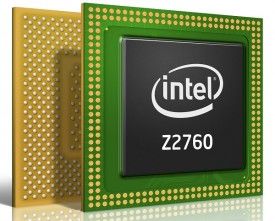 Intel is dropping the Clover Trail codename and is now officially referring to their new system-on-a-chip as the Atom Z2760. You can see the full processor details here. This is a dual-core 1.8GHz SoC built on the 32nm process and includes a 533MHz integrated graphics processor which can encode and decode 1080p video. Intel has rated the processor with a 1.7W TDP. As a 32-bit processor, the Atom Z2760 is fully compatible with the x86 version of Windows 8. The processor utilizes Intel’s ‘Burst Performance Technology’ which, similar to Turbo Boost found on Core processors, dynamically adjusts the processor’s clock speed depending upon system demand. Intel says that with the Atom Z2760 Windows 8 x86 tablets can be made as thin as 8.5mm and as light as 680 grams (1.5 pounds). Furthermore, Intel touts up to 3 weeks of connected standby wherein the device remains connected to a nearby WiFi hotspot to provide instant connectivity once the device resumes from sleep. Intel says Clover Trail systems can resume from sleep in less than 1 second.
Intel is dropping the Clover Trail codename and is now officially referring to their new system-on-a-chip as the Atom Z2760. You can see the full processor details here. This is a dual-core 1.8GHz SoC built on the 32nm process and includes a 533MHz integrated graphics processor which can encode and decode 1080p video. Intel has rated the processor with a 1.7W TDP. As a 32-bit processor, the Atom Z2760 is fully compatible with the x86 version of Windows 8. The processor utilizes Intel’s ‘Burst Performance Technology’ which, similar to Turbo Boost found on Core processors, dynamically adjusts the processor’s clock speed depending upon system demand. Intel says that with the Atom Z2760 Windows 8 x86 tablets can be made as thin as 8.5mm and as light as 680 grams (1.5 pounds). Furthermore, Intel touts up to 3 weeks of connected standby wherein the device remains connected to a nearby WiFi hotspot to provide instant connectivity once the device resumes from sleep. Intel says Clover Trail systems can resume from sleep in less than 1 second.
Intel and hardware partners have announced seven upcoming hybrid and tablet systems which will use the Atom Z2760 processor to run Windows 8. Some of these have been announced previously but companies could not reveal the hardware inside due to agreements with Intel:
Acer Iconia W510
Transformer-style hybrid. 10.1″ screen, 8.9mm thickness, 576 grams (w/o keyboard), 32GB or 64GB storage. Tablet has a SIM slot, microSD, micro-USB, and HDMI (unspecified connector type), as well as volume buttons, a microphone, and a 3.5mm headphone jack. Keyboard dock is optional and doubles as an extra battery providing up to 18 hours of batter life. Dock has a USB 2.0 port. More on the Acer Iconia W510 here.
Asus VivoTab
Transformer-style hybrid. 11.6″ IPS display (1366×768) with capacitive and active-digitizer for precise handwritten notes through the touchscreen. 8.7mm thick and 675 grams (w/o keyboard). Keyboard has an additional battery and 2x USB 2.0 ports. More on the Asus Vivio Tab here.
Dell Latitude 10
Tablet with optional (non-keyboard) dock. 10.1″ display with a swapable battery. Dock adds 2x USB 2.0 ports, ethernet, and full SD slot.
HP Envy X2
Transformer-style hybrid with 11.6″ 1366×768 display weighing in at 680 grams (w/o keyboard). SSD is on board as well as a stylus but it isn’t clear if the stylus is capacitive or for use with an active digitizer. More on the Envy X2 here.
Lenovo ThinkPad 2
10.1″ tablet, 10mm thick. 10 hour battery life claim. 1x USB 2.0 port on board. Optional stylus for use with active digitizer for enhanced accuracy while taking handwritten notes.
Samsung Smart PC (AKA Series 5 Slate)
Transformer-style hybrid. 11.6″ display with 1366×768 resolution. Samsung claims 13.5 hours of battery life. 9.9mm thick and 750 grams (w/o keyboard).
ZTE V98
Tablet with 10.1″ screen with 1366×768 resolution. 700 grams and 8.9mm thick. 64GB of storage, 2GB of RAM. 7000MaH battery.
Pricing and exact availability is unavailable for these systems but you can bet that you’ll be seeing both very soon as the October 26 Windows 8 launch date draws ever closer.

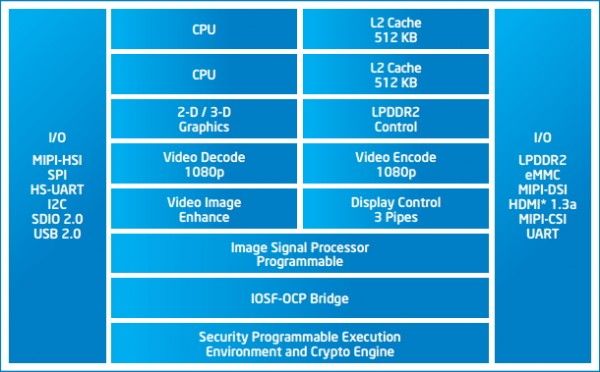
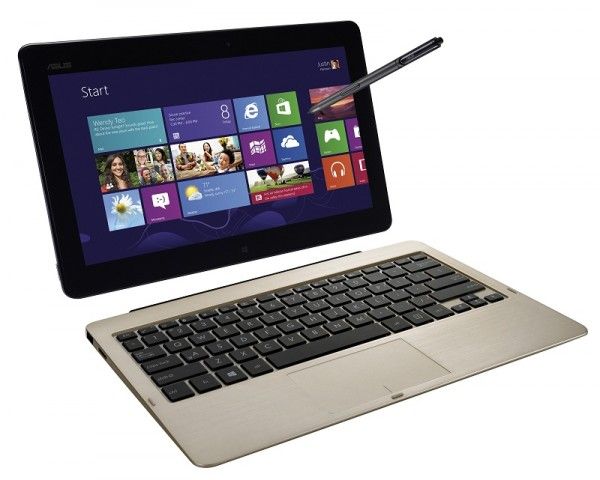
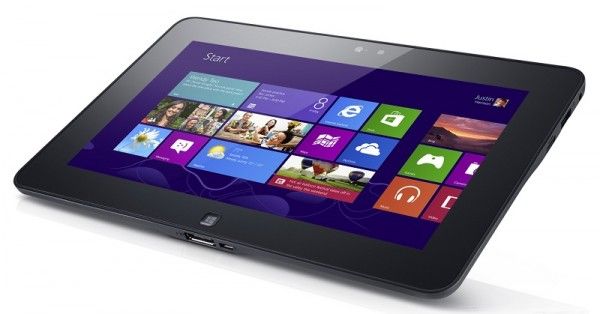
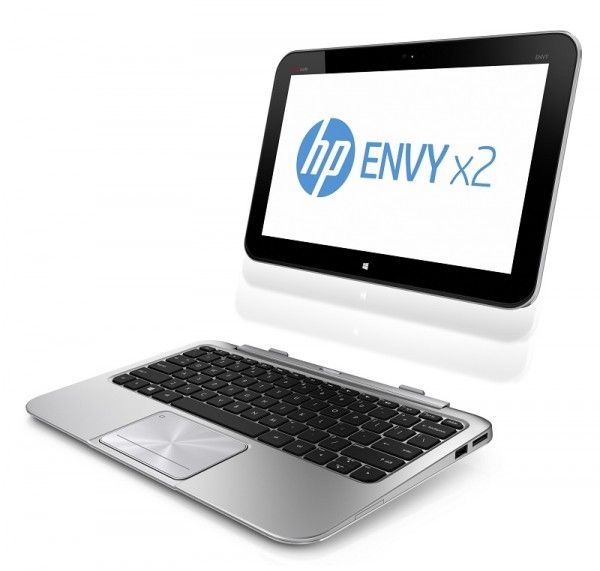
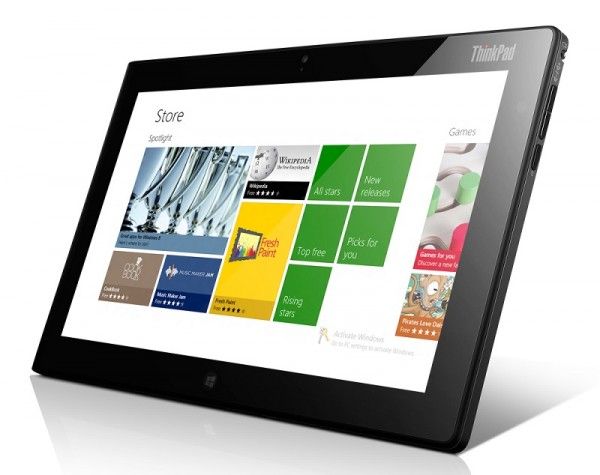
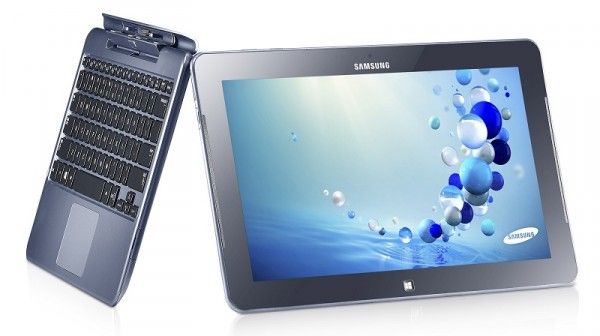
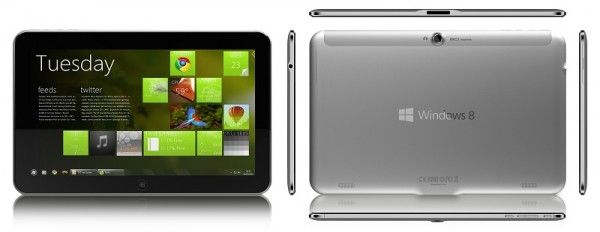










Looks like all of these either have 1366×768 or an undisclosed size display. I was hoping Win8 machines would finally get pat this low res screen nonsense. Even macs have 1440×900. 768 just isn’t enough vertical screen real estate to be useful. They need to go higher resolution or 16×10 aspect as to make these usable, and I won’t buy another machine at this res.
Dan, 1366×768 is one of the most popular resolutions for laptops these days. If you’re serious about desktop use and productivity you’ve probably got a bigger/better monitor on the desk anyway. Considering that these are 10″ or 11″ devices, 1366×768 is adequate especially because they are intended to be used with Windows 8’s new Metro interface. To put it in comparison, the iPad 1 and 2 have a 1024×768 resolution and they were able to make a fine tablet out of that.
IMO the 1366×768 displays arent so popular because they are great, they are just the cheapest display used in the PC world today and everyone uses them to keep their costs down. Sure on a 10″ or 11″ display for using metro (aka modern style) apps designed for touch should be fine and your right the iPad 1 and iPad2 had lower res screens.
BUT, if all you want to do is metro then you can get a WinRT tablet. Going intel inplies that you want to use the desktop side of things as well which just screams higher resolution. Also, this is Microsofts big push to compete with apple… that means competing with the ipad 3 not last years ipad 2.
Another reason might be that anything above 13×7 on such a small 10-11″ screens would provide a lousy desktop (not Metro) experience as everything becomes tiny. Yes you can use Windows built in DPI scaling, but it’s pretty lousy & very few programs support it properly. That’s why I’m surprised Surface Pro is going for 19×10 on a 10.6″ screen.
I really hope these new Atoms support high resolution support for external monitors. I forget which, but one of the previous generation Atom’s which capped out at like 14×9 or so.
Although I haven’t seen it in action, Win8 is supposed to have much improved support for high res screens and DPI scaling than Win7. This was done to open the door for very high resolution displays.
Mind that the Pro Surface will come with a WACOM digitizer pen. So it would be easier to hit small icons, etc. with the pen than capacitive touch.
These devices have at most an 11.6″ screen. Having a higher resolution won’t make much difference other than smaller text that you need to make larger (ie. the same size it would have been with a lower resolution).
Also, Windows 8 doesn’t exactly have resolution independence. It just has some sort of hard coded scaling related to pixel density. This, again, increases the size of fonts and uses higher resolution images on small high resolution screens.
I do think that 1366×768 is too low for larger screens though but this article doesn’t talk about those devices.
Actually there are many higher resolution win8 tablets but apparently not with Clover trail (yet).
1920×1080 (about all Core i5/i7):
– Acer Iconia Tab W700
– Asus Transformer book
– Dell XPS Duo 12
– Microsoft Surface windows 8 pro
– Samsung Ativ Smart PC Pro Series 7
– Sony VAIO Duo 11 Slider
Lenovo Yoga is 1600×900.
Is “connected standby” the samething as AOAC thats coming in Haswell?
Will these compete with ARM tablets in pricing (sub $500)?
What is the performance compared to current i-series SB/IB in light/modest gaming?
Will they be able to run the W8 desktop better than previous Atoms ran W7 desktop?
I know you & Ben may not have absolute answers but even solid guesses would be welcome.
To my knowledge no, AOAC and connected-standby are different.
Standby (aka Sleep) preserves the system environment on RAM. The RAM has to stay powered, but only a tiny amount of power is needed to keep the information there. With connected-standby, I imagine the RAM and the WiFi card will stay powered, allowing the computer to maintain it’s connection.
The name AOAC implies that the system will not be asleep but rather in an ultra low-power state (screen off, CPU frozen, disk off, RAM frozen, WiFi card on).
So technically the two should be different, but as long as resume from connected-standby is fast, there isn’t much practical difference aside from not being able to run programs or receive notifications while in connected standby. We’ll probably get more details about connected-standby from Intel soon.
http://social.msdn.microsoft.com/Forums/en-US/wdk/thread/26629db2-6d33-427c-a767-8c857d775079/
“Always-On/Always-Connected (AOAC) is the name of this feature. Connected Standby is the system state that an AOAC-compliant system can enter.”
So it really means a different way of saying the same thing. AOAC is like saying “Sleep-enabled” while Connected Standby is “Sleep”. Intel’s Smart Connect is their own variant of AOAC. Intel still needs to meet Microsoft’s requirements, but above that they implement features that are unique to their platform.
-This is also same as the feature coming in Haswell
-If you have same specs pricing should be competitive, but regular version of Windows 8 may entice users to get bigger storage, which can increase price
-Sandy Bridge is about 5x better and Ivy Bridge another 50%+ above that in graphics
-Windows 8 significantly improves responsiveness due to more hardware acceleration in 2D.
WELL DONE, Intel!
I want to see the prices and end user experience but this is a huge move in the right direction. I was afraid they were just going to die and give the huge growing market share in the 0.5 – 10 watt range to ARM.
If they’re $50 more expensive than competing Windows RT ARM devices then that’s flipping incredible and they’re probably leaving money on the table; if they’re $100 more than a Win RT ARM device then they’re fully justifiable and priced appropriately, if they’re more expensive then that it probably won’t matter too much.
Adam
With these teeny tiny screens they REALLY need wireless display out. I hope someone makes one with with some sort of Wireless Display out….
Adam
Intel is pushing its proprietary WiDi technology for wireless display capability.
There’s some demonstrations you can look at on youtube if you want to see it in action…
Doesn’t WiDi tech require an i Series processor. I wonder if they would include it in the atom line.
WiDi just requires a Intel processor with a GMA able to handle the streaming and a Intel Centrino wireless with Intel MyWiFi Technology enabled.
Intel actually already tried it with the Cedar Trail ATOM, it was just limited to about 600p resolution streaming at the time.
So they could do it again with Clover Trail, but it may not be a priority if it’s still limited.
Meaning they may wait, or not all units may offer it, until the 22nm update rolls out for the ATOM and adds some Ivy Bridge technology to the ATOM.
However, mind the Pro Windows 8 tablets will be running on Core i-Series!
I hope i wont get stoned for an off the wall question but does anyone know or recommend, how much GB should be left empty on an 128 ssd hardrive with 91.4 GB space to start with for the system to still run smoothly. I like to fill up my Samsung Series 9 to the brim but beem wondering lately if I am not running into problems for doing so (defrag space ect.)
How much space do you guys leave free on your 128 ssd devices at minimum ?